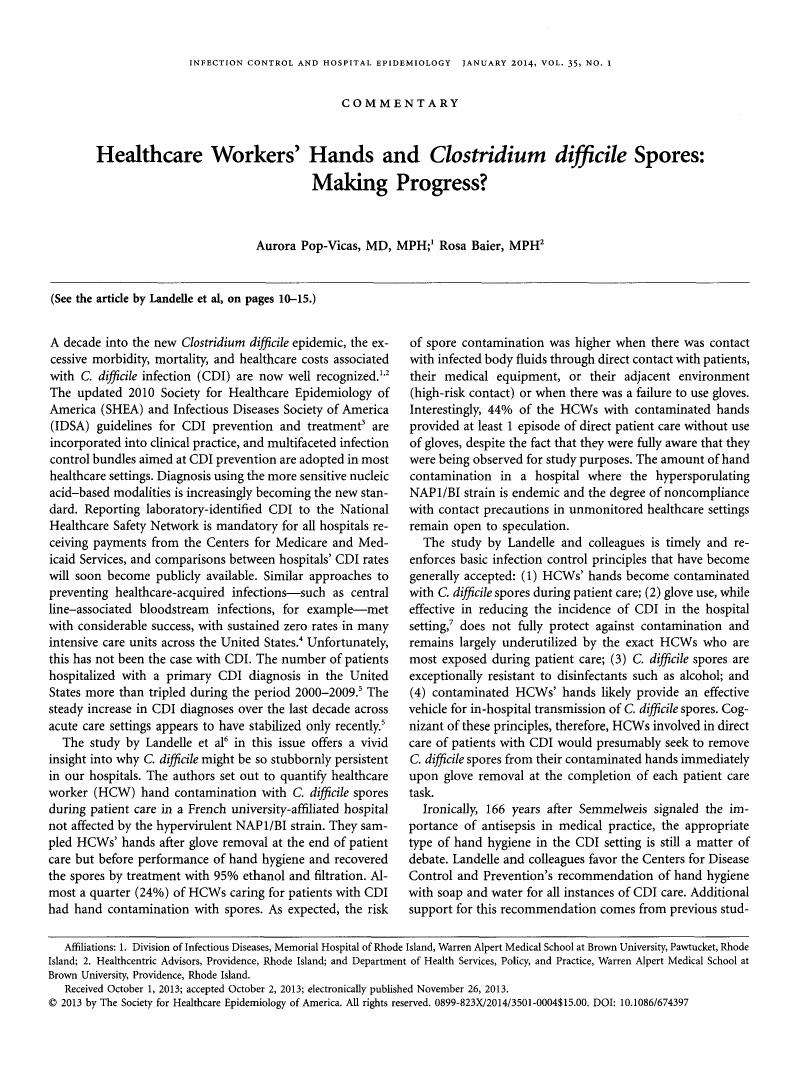Crossref Citations
This article has been cited by the following publications. This list is generated based on data provided by Crossref.
Wigglesworth, Neil
2014.
Journal Watch.
Journal of Infection Prevention,
Vol. 15,
Issue. 2,
p.
74.
Nerandzic, Michelle M.
Donskey, Curtis J.
and
Popoff, Michel R.
2015.
Induced Sporicidal Activity of Chlorhexidine against Clostridium difficile Spores under Altered Physical and Chemical Conditions.
PLOS ONE,
Vol. 10,
Issue. 4,
p.
e0123809.
Jullian-Desayes, Ingrid
Landelle, Caroline
Mallaret, Marie-Reine
Brun-Buisson, Christian
and
Barbut, Frédéric
2017.
Clostridium difficile contamination of health care workers' hands and its potential contribution to the spread of infection: Review of the literature.
American Journal of Infection Control,
Vol. 45,
Issue. 1,
p.
51.



